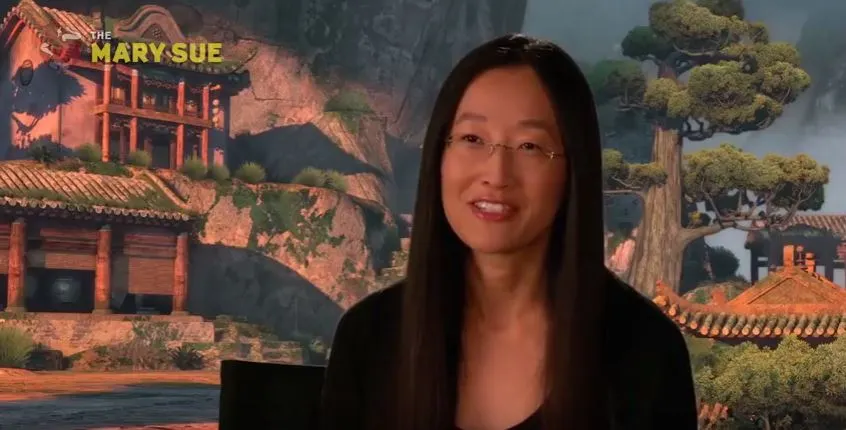In a new series at The Mary Sue, we’re highlighting the work of women in animation. For our first installment, we’re looking at the career of Jennifer Yuh Nelson.
Yuh started drawing when she was 3 years old, and after studying illustration began her career in animation as a cleanup artist at Jetlag Productions and on shows like Todd McFarlane’s Spawn and Real Adventures of Johnny Quest before joining DreamWorks in 1998, There, she worked as a storyboard artist on films like Sinbad and Madagascar.
She went on to be head of story in Kung Fu Panda, for which she won an Annie Award. You can see Yuh’s hand in Kung Fu Panda‘s stylized sequences, which she attributes to her love of anime and genres like martial arts movies, science fiction, and action movies.
Something I love and relate to about Yuh is that she’s called herself an introverted person and sees humor in the fact many wouldn’t think she “likes to choreograph and draw action sequences.” In a PBS interview, after recognizing she not the usual “prototype” for an action director, Yuh says that she’s fortunate that people see the quality in her art. It was producer Melissa Cobb, she said, who suggested she should be the one to direct Kung Fu Panda 2.
In 2011, she became the first woman to solely direct an hugely successful animated feature with the sequel which went on to become the highest-grossing film by a solo female director. She also became the second woman ever nominated for an Academy Award for best animated feature!
You might remember that really awkward animation roundtable of male directors talking about representation, and one particular quote from director Mark Osborne where he said that they had just “Googled China” for Kung Fu Panda. There’s a notable shift in the Kung Fu Panda movies as we see Yuh take a position of leadership.
She continued to do great work in the director’s chair with Kung Fu Panda 3, which she has described as a reflection of her own experience going back to Korea for the first time. 3 was also the first animated film to be co-produced with a Chinese firm. On the collaboration, Yuh has said she’s always wanted to be “respectful of kung-fu movies and the culture,” which they accomplished by bringing the team to China for research, and including an expert to, quote, “push the authenticity even more.” One example she gave was making sure that the outfits that we saw in the film didn’t mix dynasties.
On the subject of being a pioneering female director, Yuh told The Hollywood Reporter: “I don’t think about the gender thing very much. But when I speak at schools, I’ve had female students say to me afterwards, ‘I never envisioned myself being a director, since I’ve never seen women do it.’ But after seeing me, they can picture themselves directing, so maybe we’ll see more female directors. And half of these kids in art and animation schools are girls.”
Yuh is currently working on making her live action debut with an adaptation of Alexandra Bracken’s YA series The Darkest Minds.
Keep an eye out for out next installment, and let us know if there’s a woman in animation we should be talking about!
Want more stories like this? Become a subscriber and support the site!
—The Mary Sue has a strict comment policy that forbids, but is not limited to, personal insults toward anyone, hate speech, and trolling.—
Follow The Mary Sue on Twitter, Facebook, Tumblr, Pinterest, & Google+.









Published: Feb 2, 2017 04:39 pm